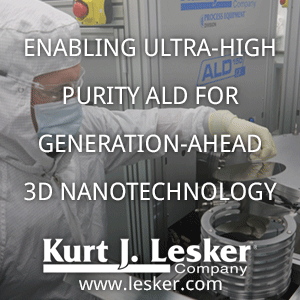Inficon's xParts coating service for coating on 3D parts for use in extreme harsh applications such as semiconductor production processes.
In the todays high-tech industries such as the Semi Conductor production, the complexity of the processes and the equipment exposure to harsh chemistry is intense. The desire for tool up-time, high yield and good wafers by lowering the cost of ownership is eminent. Through INFICON xParts ALD coatings one can address exactly these challenges.
1. High conformity allows to coat highly complex 3D geometries with large aspect ratios
2. Outstanding chemical resistance against harsh chemistries (Fluorine, Chlorine etc.)
3. Sealing pores, cracks and voids in thick but porous coatings (E.g Plasma spray)
4. Reduces AlF3 formation and delimitation
Check out the Picosun P1000 in action in the video below.
--------------------------
By Abhishek Thakur



%20(1).png)



